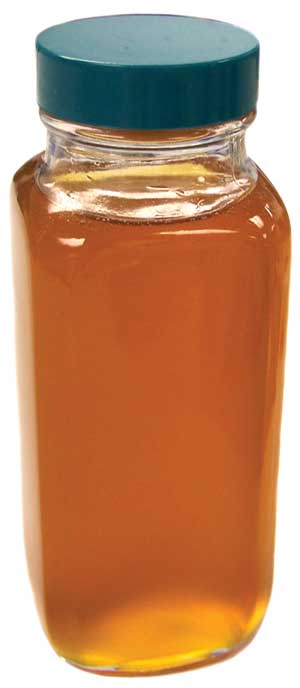Feed tests show glycerin comparable to corn

April 15, 2008
BY Timothy Charles Holmseth
The Iowa State University Department of Animal Science recently concluded tests conducted throughout 2007 that assessed the viability of crude glycerin as an animal feed. The results indicated that the byproduct of biodiesel production is viable and comparable to corn.
Brian Kerr, research leader in Ames, Iowa, who works for the USDA Agricultural Research Service, said the crude glycerin was fed to laying hens and swine while their metabolisms were analyzed. "Our goal was to use [glycerin] as an energy source for swine and poultry," he said. "You've got to have energy for pigs and chickens to grow, as well as amino acids and other items, and [glycerin is] used for growth and productive purposes."
Although the crude glycerin was determined to be a viable energy-creating feed, Kerr said the ever-fluctuating markets ultimately determine its use. "Corn would be cheaper," he said, referring to the present situation. "When we started [testing], glycerin was 3 cents a pound. Corn at that time was maybe 6 cents a pound." However, now glycerin is 20 cents per pound. "At 20 cents a pound, it's too expensive as an energy source," he said.
The testing consisted of energy-balance experiments that determined the effect of carefully applied dietary treatments, which ultimately rendered a metabolized energy number. "[We] feed them a known quantity of feed or test ingredient, and then determine how much energy they have consumed from that diet and how much energy has been excreted in the feces or urine to come up with a metabolized energy number," Kerr explained.
Crude glycerin is 85 percent glycerin, 10 percent water and 5 percent salts, as opposed to refined glycerin, which is more than 99 percent glycerin with no impurities. Refined glycerin can be used to make pharmaceutical products.
Brian Kerr, research leader in Ames, Iowa, who works for the USDA Agricultural Research Service, said the crude glycerin was fed to laying hens and swine while their metabolisms were analyzed. "Our goal was to use [glycerin] as an energy source for swine and poultry," he said. "You've got to have energy for pigs and chickens to grow, as well as amino acids and other items, and [glycerin is] used for growth and productive purposes."
Although the crude glycerin was determined to be a viable energy-creating feed, Kerr said the ever-fluctuating markets ultimately determine its use. "Corn would be cheaper," he said, referring to the present situation. "When we started [testing], glycerin was 3 cents a pound. Corn at that time was maybe 6 cents a pound." However, now glycerin is 20 cents per pound. "At 20 cents a pound, it's too expensive as an energy source," he said.
The testing consisted of energy-balance experiments that determined the effect of carefully applied dietary treatments, which ultimately rendered a metabolized energy number. "[We] feed them a known quantity of feed or test ingredient, and then determine how much energy they have consumed from that diet and how much energy has been excreted in the feces or urine to come up with a metabolized energy number," Kerr explained.
Crude glycerin is 85 percent glycerin, 10 percent water and 5 percent salts, as opposed to refined glycerin, which is more than 99 percent glycerin with no impurities. Refined glycerin can be used to make pharmaceutical products.
Advertisement
Advertisement
Upcoming Events





